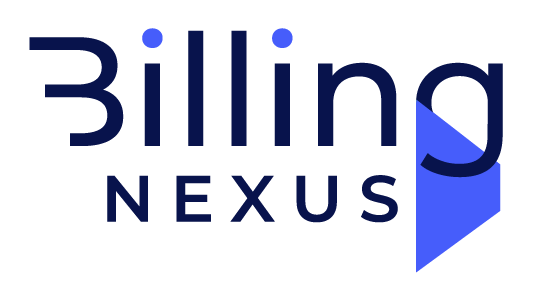Medical Billing and Medical Coding 101: What Healthcare Providers Should Know
Medical billing and coding are essential components of the healthcare revenue cycle, directly impacting financial outcomes, compliance, and patient satisfaction. Medical coding translates patient encounters into standardized codes used for billing and documentation, while medical billing ensures that providers are reimbursed for their services. Understanding the basics of both processes is vital for healthcare providers to improve practice efficiency, reduce claim denials, and enhance overall financial performance.
This comprehensive guide covers the fundamentals of medical billing and coding, including their significance, the role of healthcare providers in ensuring accuracy, and best practices for optimizing these processes.
What is Medical Billing?
Medical billing is the process of submitting and following up on claims with health insurance companies to receive payment for healthcare services provided. The billing process ensures that the healthcare provider is reimbursed for services rendered, based on the codes assigned to diagnoses and procedures.
The Importance of Medical Billing
- Accurate Reimbursement: Ensures providers are paid appropriately for services rendered.
- Compliance: Helps healthcare providers comply with legal and regulatory requirements.
- Data Accuracy: Plays a key role in maintaining accurate records for health statistics and patient care.
What is Medical Coding?
Medical coding converts medical diagnoses, procedures, services, and equipment into standardized codes that can be understood universally. These codes are primarily used for billing purposes, but they also support data analysis, clinical research, and healthcare planning.
Key Coding Systems
- ICD-10-CM: Used for diagnoses.
- CPT: For procedures and services.
- HCPCS: For medical supplies, equipment, and outpatient services.
Why Medical Coding and Billing are Important
Both medical coding and billing are essential for ensuring that healthcare providers receive accurate payments and comply with industry regulations. These processes also help reduce errors, improve patient care, and contribute to a more efficient healthcare system.
1. Ensures Accurate Reimbursement
Proper coding ensures that providers are reimbursed according to the services rendered, avoiding underpayment or overpayment.
2. Supports Compliance
Both coding and billing practices must align with healthcare regulations like HIPAA and CMS guidelines, reducing the risk of audits or penalties.
3. Facilitates Data Analytics
Coding helps track trends in healthcare, enabling providers to optimize services and improve patient outcomes.
The Role of Medical Coders and Billers
Medical coders and billers work closely together to ensure that claims are processed correctly and payments are received promptly. Coders translate healthcare services into codes, while billers manage the submission of claims to insurance companies.
Responsibilities of a Medical Coder:
- Reviewing clinical documentation for accuracy.
- Assigning appropriate codes based on documentation.
- Communicating with providers to resolve ambiguities.
Responsibilities of a Medical Biller:
- Submitting claims to insurance companies.
- Following up on unpaid claims.
- Resolving denials and ensuring proper reimbursement.
Challenges in Medical Billing and Coding
1. Incomplete or Inaccurate Documentation
One of the most common issues in both billing and coding is incomplete or inaccurate documentation, which can lead to coding errors and claim denials.
2. Complex Regulations and Payer Rules
Healthcare providers must keep up with ever-changing coding guidelines and payer-specific rules.
3. High Denial Rates
Incorrect coding and billing errors can lead to a high number of claim denials, delaying reimbursement and adding administrative costs.
Best Practices for Accurate Medical Billing and Coding
1. Accurate and Timely Documentation
Complete and clear documentation is essential for accurate coding and billing. Providers should document all relevant patient information, including diagnoses, treatments, and services rendered.
2. Regular Staff Training
Healthcare providers should ensure that their staff stays updated on the latest coding and billing practices. Regular training helps reduce errors and maintain compliance.
3. Utilize Coding Software
Adopting advanced billing and coding software can help reduce errors, automate processes, and improve efficiency.
4. Collaborate Between Coders and Providers
Coders and healthcare providers should work together to ensure that clinical documentation supports the codes selected. Open communication helps clarify any ambiguous notes and ensures accurate coding.
Key Medical Coding Systems to Know
1. ICD-10-CM (International Classification of Diseases, 10th Edition, Clinical Modification)
This system is used for coding diagnoses. It contains over 70,000 codes that cover a wide range of medical conditions and diseases.
2. CPT (Current Procedural Terminology)
CPT codes are used for coding medical procedures and services. These codes are updated annually and are essential for billing outpatient services.
3. HCPCS (Healthcare Common Procedure Coding System)
HCPCS codes are used for medical supplies, equipment, and other outpatient services. They include both CPT codes (Level I) and codes for non-physician services (Level II).
How Medical Coding and Billing Work Together
Medical coding and billing are two sides of the same coin. Accurate coding leads to accurate billing, and accurate billing results in proper reimbursement. Here’s how they work together:
- Step 1: Providers document the patient’s condition, treatment, and services provided.
- Step 2: Coders review the documentation and assign the correct codes (ICD-10, CPT, HCPCS).
- Step 3: Billers use the codes to submit claims to insurance companies and follow up on claims until payment is received.
Common Coding and Billing Errors and How to Avoid Them
1. Incorrect Code Assignments
Using incorrect codes can lead to denials or delayed payments. Ensure coders are familiar with the most current codes and guidelines.
2. Missing or Ambiguous Documentation
Incomplete or unclear documentation can lead to coding errors. Ensure that providers document every relevant aspect of the patient encounter.
3. Failure to Verify Insurance Information
Incorrect insurance details can delay claim submissions. Verify patient insurance before providing services.
Future Trends in Medical Billing and Coding
1. AI and Automation
Artificial Intelligence is increasingly being used in medical coding and billing to automate repetitive tasks, reduce human errors, and speed up the reimbursement process.
2. Telemedicine Billing
With the rise of telemedicine, billing systems need to accommodate virtual healthcare services. Providers must ensure that telehealth visits are correctly coded and reimbursed.
3. Blockchain Technology
Blockchain offers potential for secure, transparent, and efficient billing systems, with the possibility of reducing fraud and improving claim accuracy.
Conclusion
Both medical coding and billing are integral to the smooth operation of healthcare practices. By understanding these processes, healthcare providers can reduce claim denials, ensure accurate reimbursements, and stay compliant with regulations. Implementing best practices and staying updated on industry trends are crucial for the financial health of any healthcare organization.
Incorporating the right tools, providing ongoing staff training, and fostering collaboration between coders, billers, and healthcare providers are key steps toward optimizing your practice’s revenue cycle.

